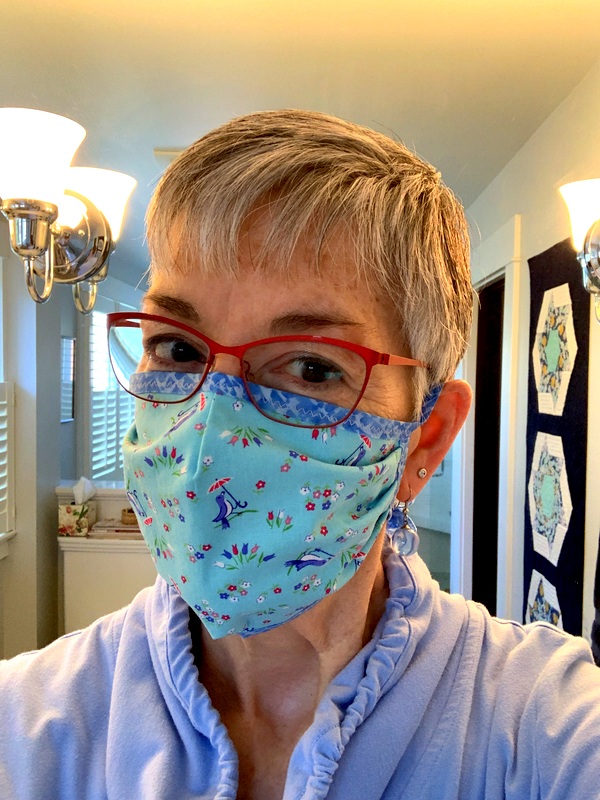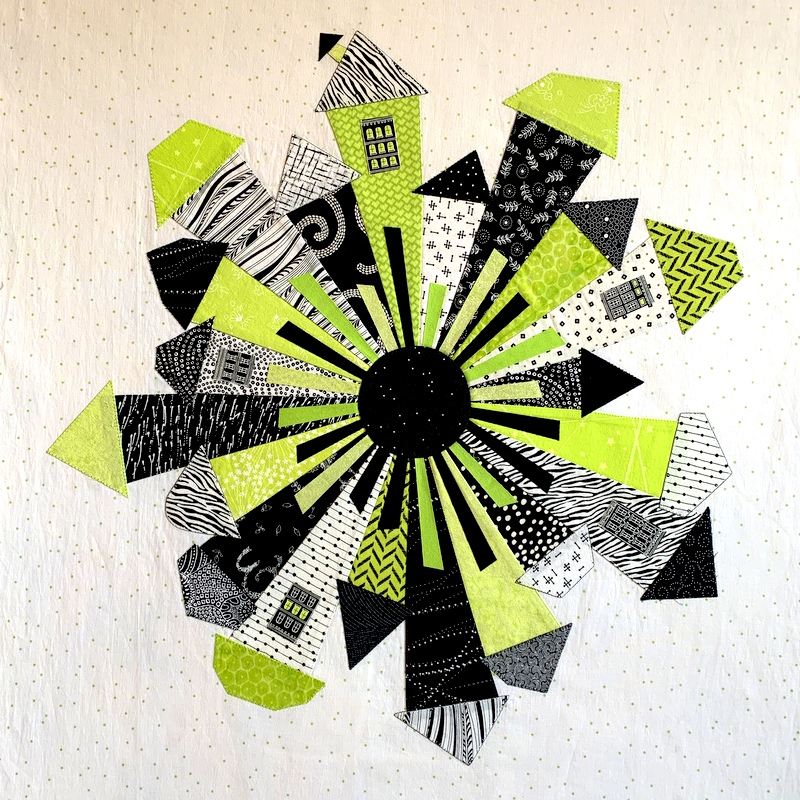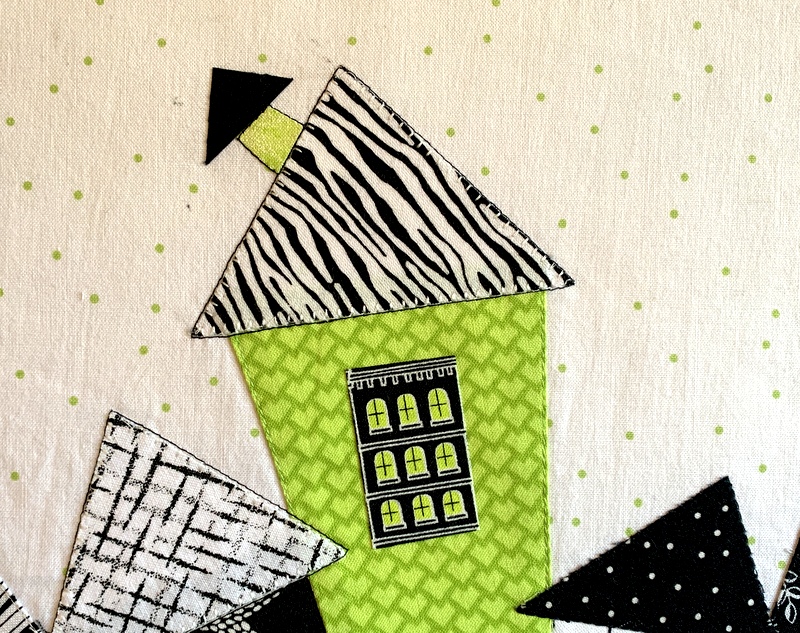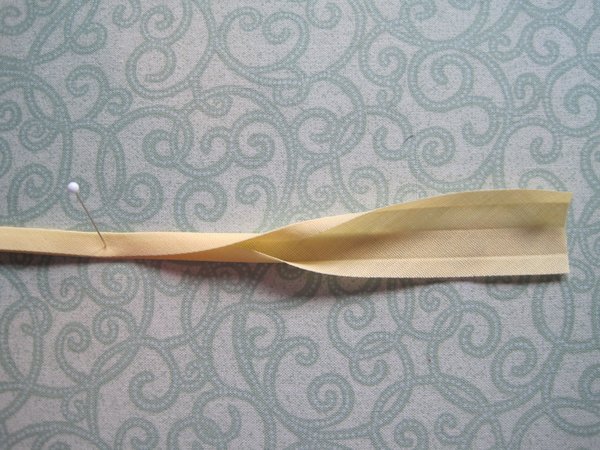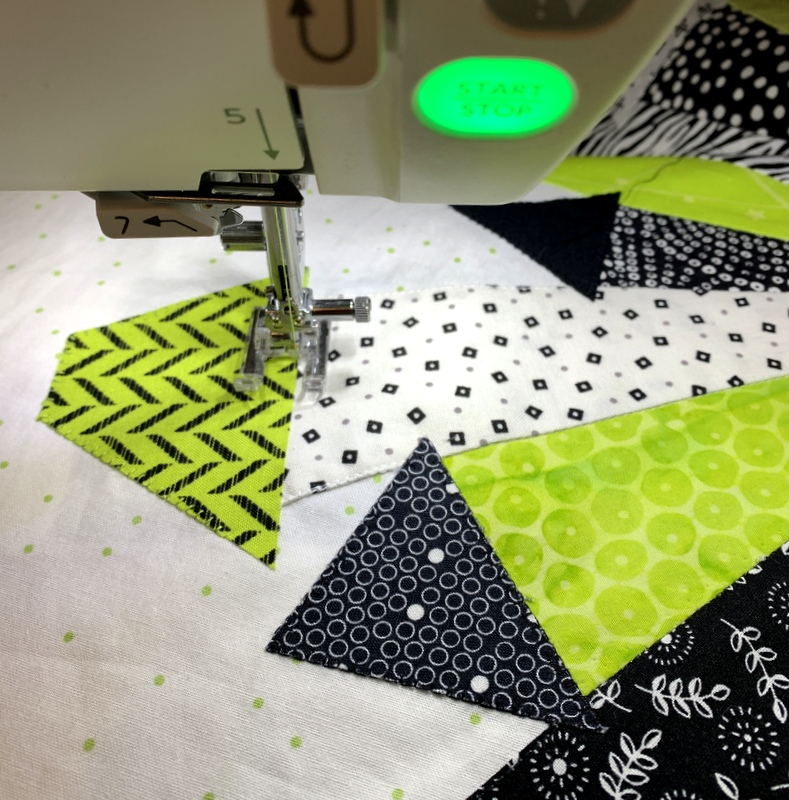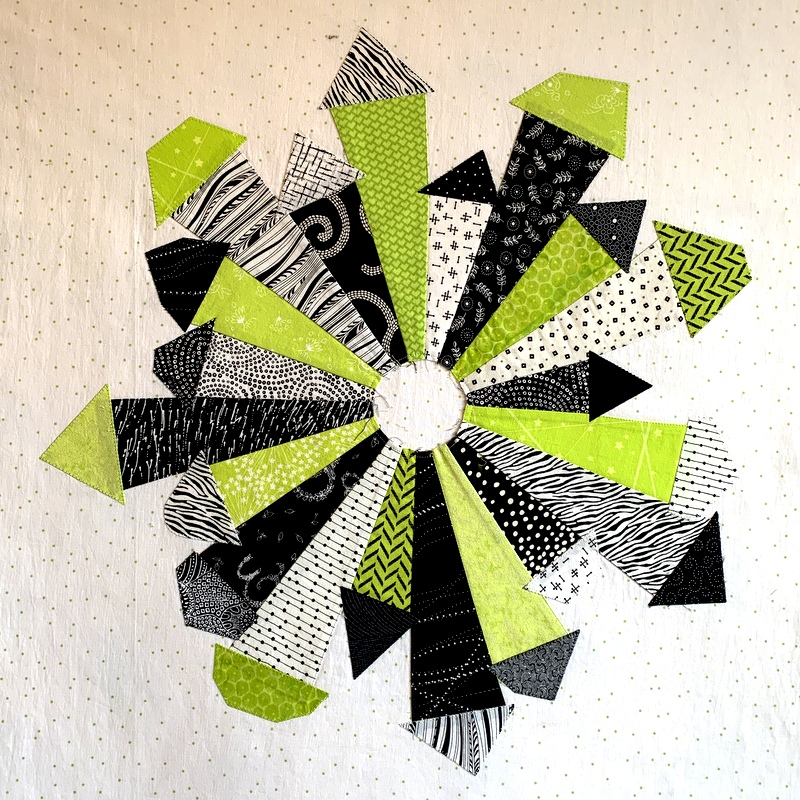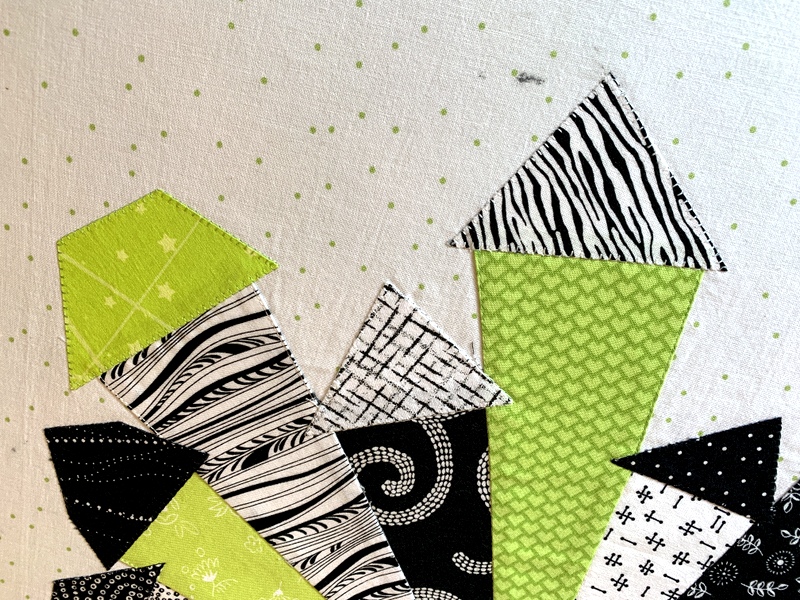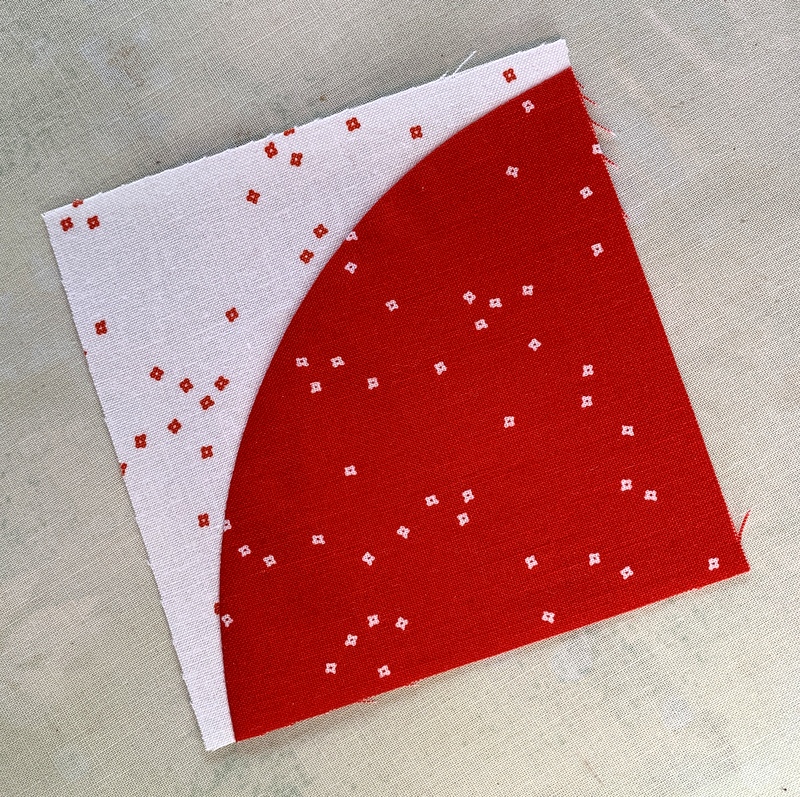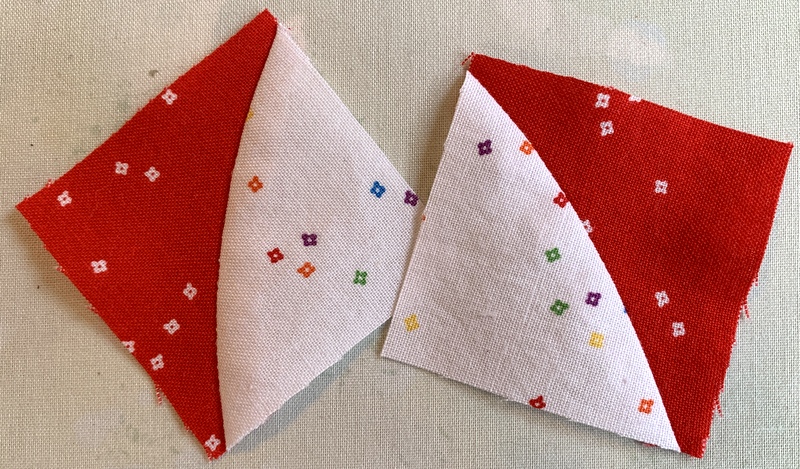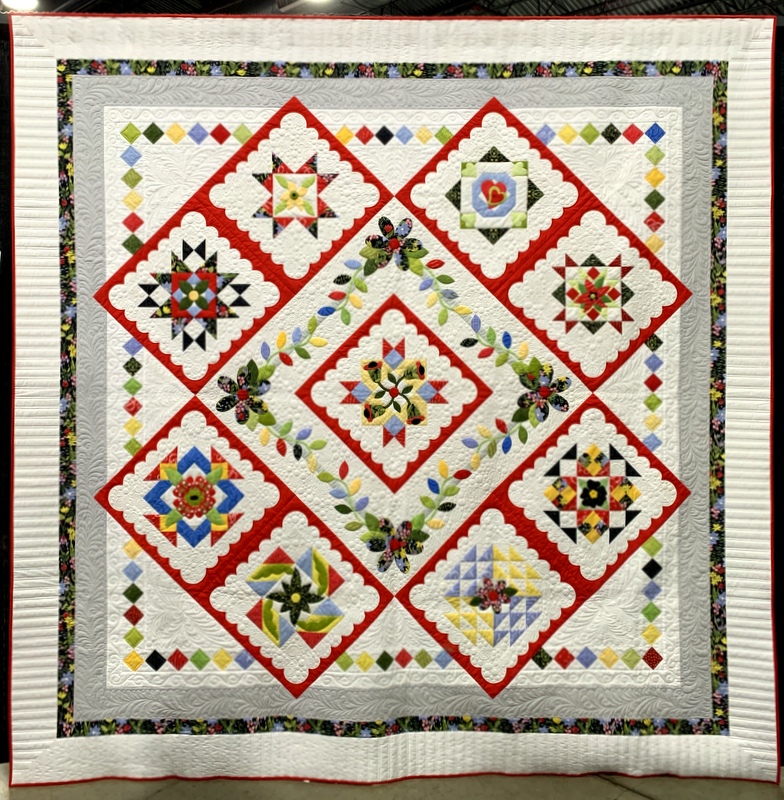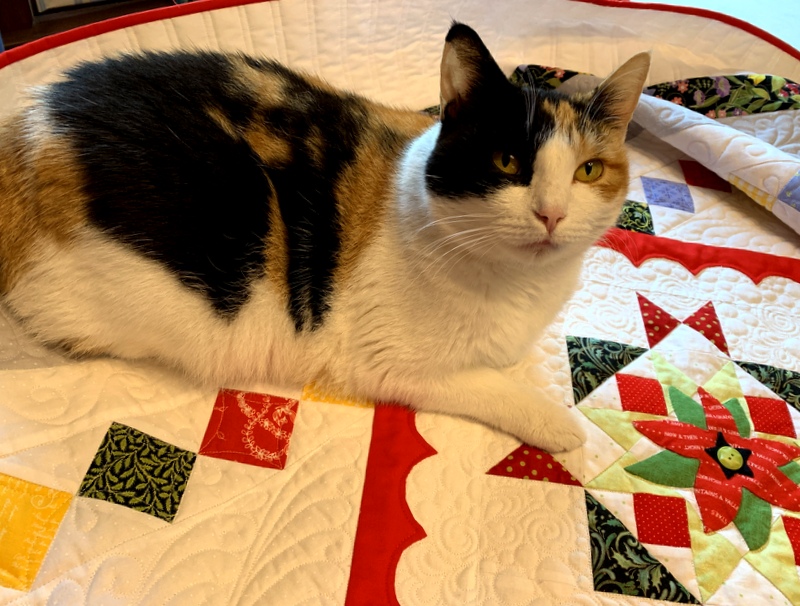The face masks I’ve been making over the last several days are finished with fabric ties. For the most part I’ve been following the tutorial of ER nurse Jessica Nandino but I departed from her instructions by pressing my strips of straight-grain fabric in the manner of double-fold bias tape before sewing them onto the mask rather than after. This allows me to insert the raw edges of the mask into the center of the binding strips and stitch once through all the layers. The finished product is very neat looking (as in neat and tidy) but the ties aren’t as flat as I would wish. In addition, the process of pressing three separate folds into those fabric strips is time-consuming and tedious. Oy, is it ever!
I have a bias tape maker on order that converts strips of bias fabric into ⅜”-wide double-fold bias tape but it will be several days before it arrives. In the meantime, I decided to try something different: I cut ⅞”-wide strips of fabric on the bias, pressed them only once in the middle, then encased the raw edges of the mask in the folded strip, leaving the raw edges of the bias strips in plain view. I chose batik fabric for the bias strips because it’s very tightly woven. My assumption was that when a mask made this way goes through the washer and dryer, the raw edges of the straps won’t fray and the finished product will still look neat and tidy.
Friends, it worked! Granted, the finish isn’t as fine but I think it looks pretty darn good. Here’s my first attempt:
 This mask has been through the washer and dryer.
This mask has been through the washer and dryer.
Here’s a close-up, looking at the inside of the mask:
 If you look carefully you can see that the raw edges of the binding are just the teensiest bit fuzzy but there is no raveling. That stitching you see on the inside mask fabric is the nose dart. The nose and chin darts in Jessica’s design give the mask its close fit. It’s a feature of her tutorial that I really like. No need to make a casing to insert a pipe cleaner or floral wire to shape the top of the mask, as I’ve seen in some face mask tutorials.
If you look carefully you can see that the raw edges of the binding are just the teensiest bit fuzzy but there is no raveling. That stitching you see on the inside mask fabric is the nose dart. The nose and chin darts in Jessica’s design give the mask its close fit. It’s a feature of her tutorial that I really like. No need to make a casing to insert a pipe cleaner or floral wire to shape the top of the mask, as I’ve seen in some face mask tutorials.
For my second attempt at a raw edge binding finish I used a zigzag stitch:
 I think it gives a neater finish and may prove to be more durable than a single line of stitching.
I think it gives a neater finish and may prove to be more durable than a single line of stitching.
Here’s a photo of the mask after having been laundered:
 Again, no raveling of the raw edges, just the slightest bit of fuzziness.
Again, no raveling of the raw edges, just the slightest bit of fuzziness.
Here is the same mask being modeled by moi:
These masks are not medical grade but they’re certainly better than no protection at all. And you can add an additional layer of protection by inserting a coffee filter in the mask:
I did have to trim the top and bottom of this 12-cup coffee filter to make it fit.
Thus far I’ve been making one mask at a time because of my tinkering with the construction method. Now I’m at the point where I can move to assembly-line production. A very low-key assembly line, to be sure. I’m not a speedy seamstress but my output should increase significantly.
I did figure out a faster way to cut fabric. Jessica’s pattern represents half of the mask. It was designed to be pinned in place with the center of the mask on a folded piece of fabric and cut out one at a time. To speed up the cutting process I made a full-size freezer paper pattern and pressed it to the top layer of fabric. With a sharp blade in my rotary cutter I can easily cut several layers of fabric at a time.
Then I simply peel off the freezer paper pattern and it’s ready to be used over and over again.
When my next batch of masks is done (I’m still sewing for friends and family) I’m going to reward myself by taking a break from maskmaking and sewing something new.

